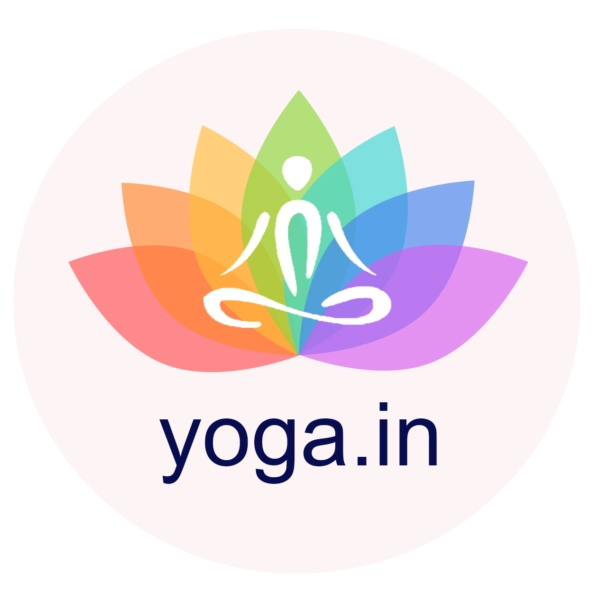About Vinyasa Yoga
Vinyasa yoga, also known as “flow yoga,” is a popular and dynamic form of yoga that emphasizes synchronized breath with a continuous flow of movements. It is a modern style of yoga that incorporates fluid transitions between various postures, promoting flexibility, strength, and mindfulness.
Vinyasa yoga is derived from the Sanskrit words “vi” (meaning “in a special way”) and “nyasa” (meaning “to place”). It can be understood as the mindful linking of breath with movement, where practitioners seamlessly transition between poses while maintaining a steady and rhythmic flow. The focus on breath ensures a meditative and harmonious experience, encouraging practitioners to stay present throughout their practice.
The primary focus in Vinyasa yoga is on the breath, referred to as “Ujjayi” breath. This victorious breath involves inhaling and exhaling through the nose with a slight constriction at the back of the throat, creating a soft ocean-like sound. Ujjayi breath helps to regulate the flow of oxygen, enhances concentration, and builds internal heat, promoting purification of the body and mind.
Good For:
Vinyasa yoga is suitable for individuals of all fitness levels, as it can be adapted to meet various needs and abilities. Beginners may start with gentle classes, while more experienced practitioners can explore challenging sequences. However, if you have specific medical conditions or injuries, it is advisable to consult with a healthcare professional before beginning any new exercise regimen.
Usage:
Vinyasa yoga classes may incorporate props to enhance the practice and provide support during certain postures. Common props used in Vinyasa yoga include:
- Yoga Mat: Provides cushioning and stability during standing and seated poses.
- Yoga Blocks: Assist with reaching the ground in standing poses and provide support during balancing postures.
- Yoga Strap: Helps with extending reach and improving flexibility in certain poses.
- Bolsters and Blankets: Aid in relaxation and restorative poses, promoting deep relaxation.
History:
Vinyasa yoga is an evolution of traditional Hatha yoga, which has its roots in ancient India. Hatha yoga, dating back thousands of years, primarily focused on asanas (postures) and pranayama (breath control) to promote physical and mental well-being. Vinyasa yoga gained popularity in the 20th century and was greatly influenced by the teachings of renowned yoga master Sri Tirumalai Krishnamacharya and his disciple, Sri K. Pattabhi Jois, who developed Ashtanga Vinyasa Yoga.
Ashtanga Vinyasa Yoga served as a foundation for modern Vinyasa yoga, which introduced more creative and flowing sequences, giving teachers the freedom to design practices that suit individual needs and preferences. Today, Vinyasa yoga is one of the most widely practiced forms of yoga across the world, appreciated for its adaptability and accessibility to practitioners of all levels.
Another fundamental aspect of Vinyasa yoga is the concept of “Vinyasa Krama,” which emphasizes intelligent sequencing of postures. Practitioners move through a series of asanas, and each transition is linked with a specific breath. The seamless flow from one pose to another encourages mindfulness, balance, and strength.
Chakras in Vinyasa Yoga:
Chakras are energy centers within the body, according to ancient yogic philosophy. While Vinyasa yoga does not explicitly focus on chakras, certain poses and breathwork are believed to stimulate and balance these energy centers. Different poses may target specific chakras to promote physical and emotional harmony.
Conclusion:
Vinyasa yoga is a dynamic and transformative practice that unites breath and movement, promoting physical, mental, and emotional well-being. Its modern evolution has made it accessible to practitioners worldwide, allowing each individual to embark on a unique journey of self-discovery and transformation. Whether you are a beginner or an experienced yogi, Vinyasa yoga offers a diverse and enriching experience that caters to all levels and preferences. As you dive into the flowing sequences and embrace the rhythm of your breath, you’ll discover a profound sense of connection and balance that extends beyond the mat and into all aspects of life.

 Afrikaans
Afrikaans Shqip
Shqip አማርኛ
አማርኛ العربية
العربية Հայերեն
Հայերեն Azərbaycan dili
Azərbaycan dili Euskara
Euskara Беларуская мова
Беларуская мова বাংলা
বাংলা Bosanski
Bosanski Български
Български Català
Català Cebuano
Cebuano Chichewa
Chichewa 简体中文
简体中文 繁體中文
繁體中文 Corsu
Corsu Hrvatski
Hrvatski Čeština
Čeština Dansk
Dansk Nederlands
Nederlands English
English Esperanto
Esperanto Eesti
Eesti Filipino
Filipino Suomi
Suomi Français
Français Frysk
Frysk Galego
Galego ქართული
ქართული Deutsch
Deutsch Ελληνικά
Ελληνικά ગુજરાતી
ગુજરાતી Kreyol ayisyen
Kreyol ayisyen Harshen Hausa
Harshen Hausa Ōlelo Hawaiʻi
Ōlelo Hawaiʻi עִבְרִית
עִבְרִית हिन्दी
हिन्दी Hmong
Hmong Magyar
Magyar Íslenska
Íslenska Igbo
Igbo Bahasa Indonesia
Bahasa Indonesia Gaeilge
Gaeilge Italiano
Italiano 日本語
日本語 Basa Jawa
Basa Jawa ಕನ್ನಡ
ಕನ್ನಡ Қазақ тілі
Қазақ тілі ភាសាខ្មែរ
ភាសាខ្មែរ 한국어
한국어 كوردی
كوردی Кыргызча
Кыргызча ພາສາລາວ
ພາສາລາວ Latin
Latin Latviešu valoda
Latviešu valoda Lietuvių kalba
Lietuvių kalba Lëtzebuergesch
Lëtzebuergesch Македонски јазик
Македонски јазик Malagasy
Malagasy Bahasa Melayu
Bahasa Melayu മലയാളം
മലയാളം Maltese
Maltese Te Reo Māori
Te Reo Māori मराठी
मराठी Монгол
Монгол ဗမာစာ
ဗမာစာ नेपाली
नेपाली Norsk bokmål
Norsk bokmål پښتو
پښتو فارسی
فارسی Polski
Polski Português
Português ਪੰਜਾਬੀ
ਪੰਜਾਬੀ Română
Română Русский
Русский Samoan
Samoan Gàidhlig
Gàidhlig Српски језик
Српски језик Sesotho
Sesotho Shona
Shona سنڌي
سنڌي සිංහල
සිංහල Slovenčina
Slovenčina Slovenščina
Slovenščina Afsoomaali
Afsoomaali Español
Español Basa Sunda
Basa Sunda Kiswahili
Kiswahili Svenska
Svenska Тоҷикӣ
Тоҷикӣ தமிழ்
தமிழ் తెలుగు
తెలుగు ไทย
ไทย Türkçe
Türkçe Українська
Українська اردو
اردو O‘zbekcha
O‘zbekcha Tiếng Việt
Tiếng Việt Cymraeg
Cymraeg isiXhosa
isiXhosa יידיש
יידיש Yorùbá
Yorùbá Zulu
Zulu